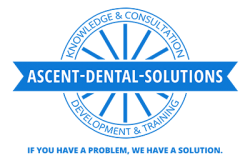If you are buying an existing dental practice, odds are high that the business side of the transaction is uppermost in your mind. After all, you must work your way through a seemingly endless set of documentation, from the purchase agreement to equipment leases, to ensure that you get a fair deal. Still, though, it is vital to remember that you are a dentist, and that an existing practice comes with an existing patient load and office staff who must be carefully tended to throughout the transition period. Here is a checklist to help you balance both sides of the transition.
Chart Audit
Review 10 percent of the active patient charts, or at least 100 charts. Most definitions of “active patient” state that the person has been seen for care in the past 12 to 18 months, but some dentists define it differently. Determine if your definition of “active” matches that of the selling dentist, or whether you will need to sort through all the charts to reclassify them.
Business Policies
Review any documentation that the practice has regarding patient flow and office management, such as the Standard Operating Procedures (SOPs). Learn the existing policies for everything from missed appointments to staff vacation scheduling. It is fine to change the current policies over time, but for everyone’s sake, try to maintain continuity by not implementing too many changes at once.
Treatment Planning
Review a few charts to compare your own clinical judgment to that of the selling dentist. Note any cases where you seem to wildly disagree. Also consider criteria for case acceptance, clinical proficiency of yourself and the existing staff, areas of treatment interest, and where both you and the selling dentist fall on the spectrum of conservative to experimental treatment. Start making plans for addressing areas where your methodologies are significantly different from those of your predecessor.
Billing and Collections
Review the existing financial arrangements for all aspects of billing and collections. What payment options are accepted? What is the fee schedule, and how does it compare to reimbursement rates and local competitors’ rates? What does the accounts receivable monthly average aging look like? Which insurances are accepted, and what do you need to do to transfer accepted insurance contracts into your name?
Scheduling
Review the existing scheduling process. Are there gaps in the schedule? Is there enough free time to treat emergencies? How far out are basic hygiene appointments scheduled? What about exams? How many complex procedures are on the schedule, and in what time frame?
New Patient Flow
How many new patients are coming in each month? What are the referral sources? What types of marketing are currently implemented, and what is their return on investment? Look for areas that are working well, as well as ways to improve the flow of new patients.
Facility
Thoroughly examine both the inside and the outside of the property with an eye toward possible improvements. Anything from improved street visibility to better grounds maintenance could boost your bottom line. Also take a critical look at the practice through the eyes of a patient: is the waiting area clean and aesthetically pleasing? Are there private spaces to discuss treatment and payment options? Is the design modern, or intentionally a throwback, as opposed to dated and tired? Are there sufficient amenities? What type of charting system is used?
Treatment Rooms
Walk through the treatment rooms to assess the existing setup. Is the lighting sufficient? Are the chairs comfortable and in good condition? Do you have the equipment you want and need, and is it properly sized and placed for the way you like to work? Are there newer pieces of technology you would like to add? Are there adequate supplies, and a streamlined process for procuring new ones? Also, be sure to examine the sterilization equipment, and ask for an inspection certificate from the most recent inspection of the mechanical room.
Lease
Carefully review the existing lease with your attorney. Make sure you understand the remaining term and renewal options. Find out if the current lease is transferrable or if you will need to sign a new one, and check that the terms are competitive with similar leases in the local area.
Staff
Get all the details regarding staff contracts, including compensation rates and benefits. Evaluate the working relationship between the staff and the selling dentist, and get to know each staff member well enough to determine whether they are the right match for you. Work with the selling dentist to inform the staff of the transition, and find out which members of staff do not plan to stay on with you. Make a list of new staff members you will need to hire.
Transitioning an existing dental practice to new ownership can be complex. The more open both you and the selling dentist are with each other, the patients, and the staff, the smoother the transition will be. Take your time and be sure to explore all the details, and you will be in the best possible position to take the business through a smooth transition.
Ascent Dental Solutions is a full-service agency dedicated to helping dentists build their practices and map out their careers. It is the brainchild of Dr. Kevin Coughlin, who earned his doctorate at Tufts University School of Dental Medicine and currently serves as a faculty member there. While Dr. Coughlin continues to practice dentistry as the principal owner of the 14-location Baystate Dental PC, he has a strong passion for helping fellow dentists maximize their success. If you are interested in learning how to take your dental practice to the next level, please contact Ascent Dental Solutions today at 413-224-2659 to learn how Dr. Coughlin can help.


